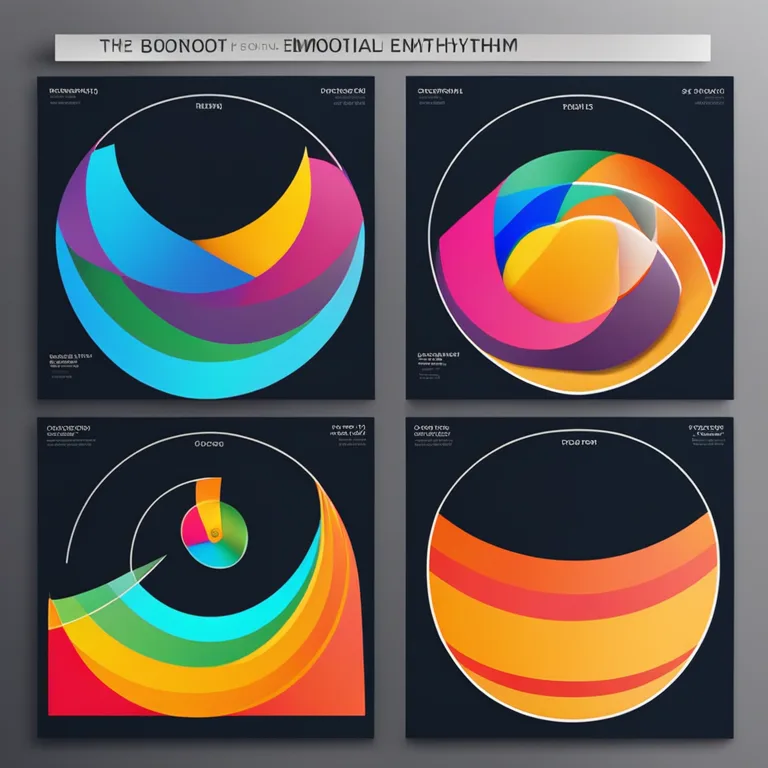
The Essence of Biorhythm Cycles: Harmonizing Life's Ebb and Flow
Discover the nuances of biorhythm cycles and how they are believed to influence physical, emotional, and intellectual capacities over time.
article by Adrian Wallace
Biorhythms: An Introduction
The concept of biorhythms is a captivating blend of biology and mathematics, proposing that our lives are influenced by natural cycles. These rhythms are said to impact our physical, emotional, and intellectual states, charting a predictable course from birth. Biorhythm theory traverses beyond the realm of science into the sphere of the esoteric, with its roots reaching back to the late 19th century. Here, we dive into the intricacies of this fascinating theory, its historical context, and its place in contemporary thought as we navigate the waters of personal well-being.

The Three Primary Cycles
Biorhythm theory posits the existence of three principal cycles: the Physical (23 days), Emotional (28 days), and Intellectual (33 days). Each cycle starts at a neutral point at birth and oscillates in a sine wave-like pattern, with periods of high (positive phase), low (negative phase), and critical transition days. Proponents of biorhythm theory believe that by tracking these cycles, one can better prepare for the challenges and opportunities that each day may hold, potentially synchronizing activities to harness the peak phases of the relevant cycle.

Physical Biorhythm Cycle
The physical biorhythm cycle, lasting approximately 23 days, is thought to influence one's energy levels, stamina, and overall physical state. During the positive phase of this cycle, individuals may feel at their peak, filled with vigor and endurance. Conversely, the negative phase might be characterized by a lack of energy or a greater susceptibility to physical illness. Regardless of one’s belief in biorhythms, understanding one’s physiological ebbs and flows can be crucial in daily planning and health management.

Emotional Biorhythm Cycle
Spanning a 28-day period, the emotional biorhythm cycle is associated with mood, creativity, and sensitivity. Emotional highs can potentially lead to increased empathy, social interaction, and an overall sense of well-being. On the flip side, during low points, an individual may experience mood swings or a general feeling of emotional instability. Acknowledging these potential swings can be valuable in personal relationships and emotional health.

Intellectual Biorhythm Cycle
The intellectual biorhythm, extending over 33 days, relates to cognitive functions, analytical thinking, and decision-making prowess. When this cycle is in a positive phase, mental acuity is believed to be heightened, making it a favorable time for learning and problem-solving. In contrast, during the negative phase, concentration can wane, suggesting that one might avoid tasks requiring deep intellectual engagement. Recognizing these trends can possibly lead to optimized performance and personal development.
Modern Usage and Interpretation
Despite a lack of empirical evidence to firmly establish the influence of biorhythms on daily life, interest in these cycles persists in popular culture and self-help communities. Today, with the aid of modern technology like smartphone apps and online calculators, tracking one's personal biorhythm profile has never been easier. Enthusiasts harness this data for an array of applications, from sports performance to career development, although the scientific community generally regards such practices as pseudoscience.
Towards a Holistic Perspective
While critics dismiss biorhythms as lacking scientific rigor, the theory undeniably encourages a more holistic view of personal health and well-being. Adherents benefit from a heightened awareness of their bodies and minds, using biorhythm charts as a tool for reflection and introspection. Whether one treats biorhythm calculations as precise predictors or mere conceptual guides, integrating this heightened self-awareness can promote a mindful approach to daily life.
Published: 12/28/2023
Modified: 12/28/2023
More predictions
Come back here soon to learn more about yourself and your future


Biorhythm Compatibility & Birthdays
Discover the intriguing connection between your birthday biorhythms and relationship harmony in our insightful article.


Navigating Biorhythm Cycles
Explore the concept of biorhythms, their cycles, and examples of how they influence our daily lives.


Biorhythm Compatibility: Fact Or Myth?
Explore the concept of biorhythm compatibility to discover if there's a real connection between our biocycles and relationship harmony.